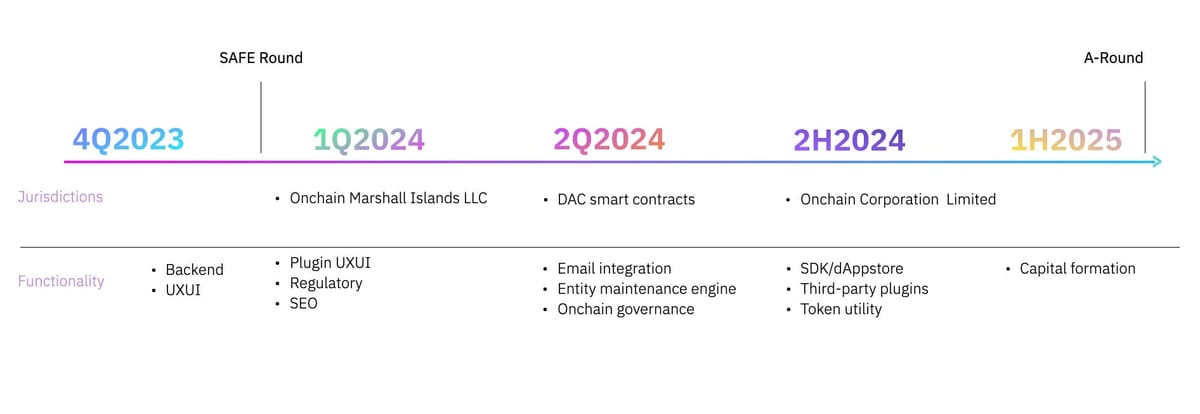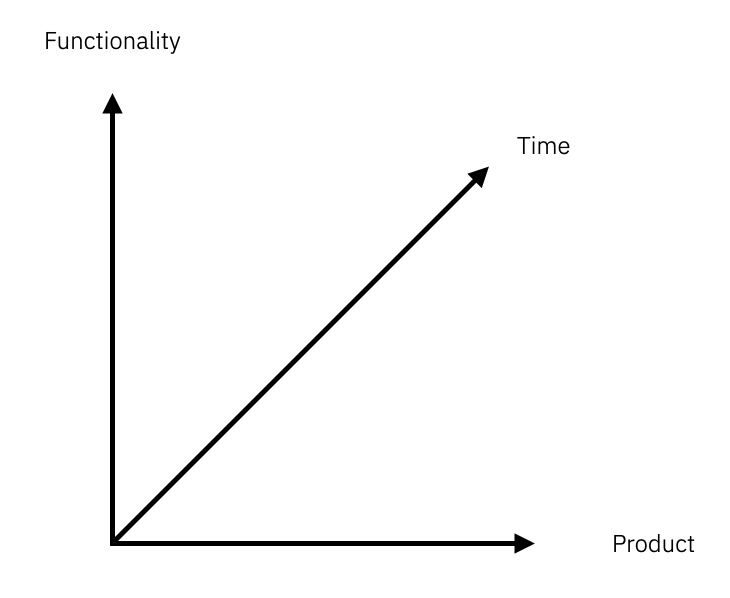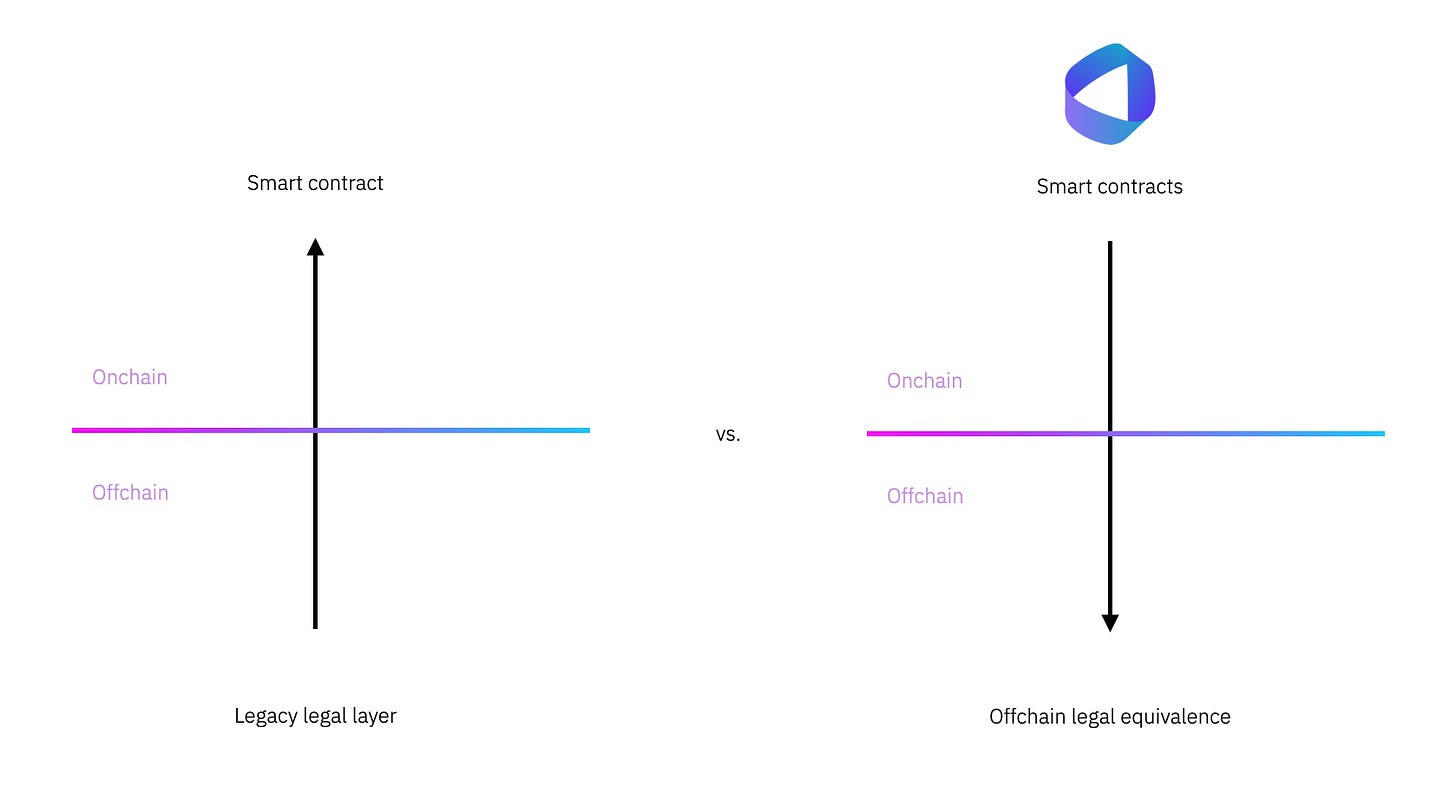Part II - What we plan to build over the next 18 months

In this part, we share a summary of our roadmap up until around summer 2025, breaking it down into what jurisdictions and what functionality we plan to add.
The way we think about our roadmap is along 3 axes: The X axis for the product (jurisdiction), the Y axis for functionality, and the Z axis for the timing.
This helps us fix (x, y, z) coordinates for what we plan to build, by deciding what functionality to add for what product at what time.

For instance, around the time we plan to raise more capital in roughly 18 months from now, we plan to start cracking the capital formation use case for onchain U.S. C-Corps.
Coordinates can’t always be plotted so precisely and we reserve the right to change our mind, for instance we may put a British Virgin Islands or U.K. limited onchain (in essence they’ve got the same pedigree, English common law, hence their legal operating system is pretty interchangeable), before we do a C-Corp.
Much of OtoCo’s smart contract suite too is usable across all jurisdictions, including the blockchain-native DAC (or Decentralized Autonomous Company, see Part I), with the major difference coming from whether some jurisdictions allow companies to be formed without filing (e.g. Series LLCs, Swiss Associations, Trusts) vs. those that require some filing event for a company to be validly constituted (e.g. standalone LLCs, the U.S. C-Corp, the U.K. Limited Company).
In what follows, we first talk about our overall design approach when adding new products and then give a quick overview of the jurisdictions we plan to add.
We then talk about what new features users can expect from OtoCo over the next 18 months.
1. How we put companies on blockchain: OtoCo’s design
Our fundamental design approach when adding a new jurisdiction is what can be called a “blockchain first” approach: instead of adding a blockchain layer on top of the legacy legal layer, our approach starts from the fundamental premise that smart contracts have legal equivalence with analog written agreements and can hence substitute - or at the very least augment - analog legal prose, rather than simply mimic it.

The first approach, which allows the legacy legal layer to lead, duplicates and arguably creates redundancy: It does not give legal equivalence to smart contracts but rather turns the blockchain into a handmaiden of analog legal prose.
The second design approach, which OtoCo is following, lends equivalence to smart contracts by treating them as genuine contracts with binding legal effect and with the additional property, as discussed in Part I, of being deployable rather then merely executable.
Perhaps the best way to illustrate this difference is by reference to the good old vending machine. The first approach would be to first sign a paper agreement before you can slot in your coins to get a snack.

One can imagine such contract would have clauses such as:
The Parties hereby contract in good faith that each will fulfill their respective obligations, being the slotting in of coins on behalf of the Vending Machine User (hereafter, the “VMU”) when desirous of a series of snacks including, but not limited to: a KitKat, a Snickers, a small bag of Lays, M&Ms, Skittles (hereafter, the “Snacks”), and the dispensation of such Snacks by the Vending Machine Operator (hereafter “VMO”), [etc].
The second approach does away with all that by making the machine itself a binding contract designed to dispense a snack when a coin is slotted in (and yes, for those who at this point ask what happens if the machine doesn’t deliver, smart contracts would add a coin restitution mechanism in case the machine fails. And unlike the physical vending machine, smart contracts can’t be brute-forced to get the goodies out!).
Following this “blockchain first” design, when adding new jurisdictions, OtoCo gives primacy to smart contracts to validly constitute legal entities.
As with the vending machine, our entity genesis smart contract is activated when ETH is sent into the contract address:
- In the case of our existing U.S. LLC products in Wyoming and Delaware and soon our Marshall Islands LLC, this triggers the contractual creation of a new entity as a Series LLC.
- In Switzerland, an onchain Association is spawned by a similar smart contract which, as a result of the nature of an Association, requires two initial wallets agreeing on a common purpose rather than just one signature as is the case with LLCs.
What new jurisdictions can users expect?
The above design works when there is no filing required to validly constitute a legal entity. This applies to all of OtoCo’s current products and its soon-to-launch Marshall Islands LLC.
However, most company forms do require some form of filing, including standalone LLCs (vs. Series LLCs), the U.S. C-Corp, the U.K. Limited Company and most if not all other offshore jurisdictions.
Whilst such “registered” entities cannot be spun up instantly connecting a wallet DeFi-style, APIs with registries help in filing for their formation, e.g. in the U.K where its registry, known as Companies House, has fairly modern APIs.
Even in the absence of APIs, registered entities such as the U.S. C-Corp can still be smart-contractified by letting smart contract bylaws take primacy over analog prose.
Once filed, founders will then simply use a smart contract as the “legal Operating System” for their registered company.
- This is what OtoCo has in mind when adding the onchain Corporation to its roadmap from 2H2024, acknowledging that it acts as the vehicle for most early stage (and largely standardized) VC-funded deals. The Corporation lends itself ideally to turning its bylaws into code, including tokenization of its stock, be it that its actual incorporation is dependent on a filing event.
- Before we add the onchain Corperation, we plan to provide a plug-in for Series LLC owners to "register” their Series LLC with the state where it was incorporated, so they have proof of their Series’ existence at registry.
- Another paid plug-in will give owners of Series the option to convert their Series into a standalone LLC which triggers the necessary filing by a third-party agent.
This brings us to the second main work stream of our roadmap: what functionality users can expect over the next 18 months.
2. How OtoCo plans to add functionality: from product to platform
Before we talk about specific functionality we plan to add, here too we want to first share our design approach.
From the early days, we took the position that we cannot be everything to all people. It would be madness to second-guess what extra functionality OtoCo users want and developing all new features in-house would risk OtoCo building stuff nobody wants.
We therefore decided early on that OtoCo would focus on:
- Building the core technology, consisting of a number of jurisdictional “motherboards”
- Author the main smart contract suite on which all the products it offers live, and
- Put the infrastructure for a marketplace for add-ons in place.
We expect some of the bolt-ons to be less scaleable services e.g. accounting (or an Entity Identification Number plugin such as the one below), others Web 2.0 or Web2.5, and some hardcore dApps, allowing OtoCo users to access functionality DeFi-style.

Some of these add-ons we want to build ourselves however the marketplace will be open to any third party developers who want to monetize their plug-ins to OtoCo’s users.
On the basis of the above, our roadmap almost wrote itself (see diagram above).
More jurisdictions + more features
We plotted our course for the next 18 months on the basis of the demand we register out there by users of OtoCo and the wider Web3 community.
A new type of vehicle for venture building in the new economy is a primitive of Web3, and a future iteration of the company will no doubt be validly constituted on blockchains and run on smart contracts.
However, being too early has been the death of many projects. That is why we are making sure that OtoCo’s solution puts a bridge in place between Web 2.0 and Web 3.0, recognizing that most doers and investors have comfort still from being tethered to a legacy jurisdiction.
It is this bridge that has informed our immediate roadmap.
> Join the OtoCo community today on our official Road to OtoCo telegram group.

